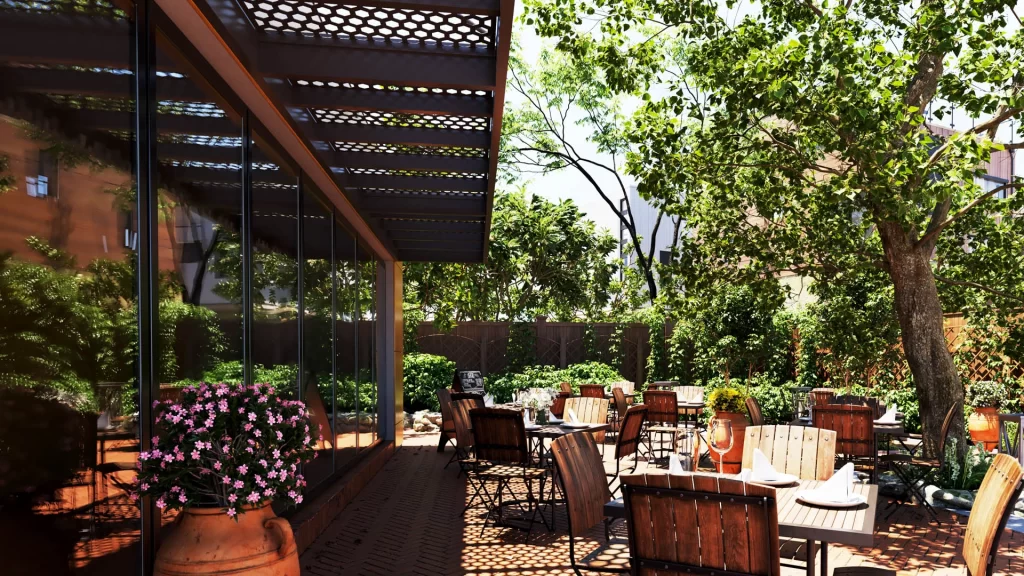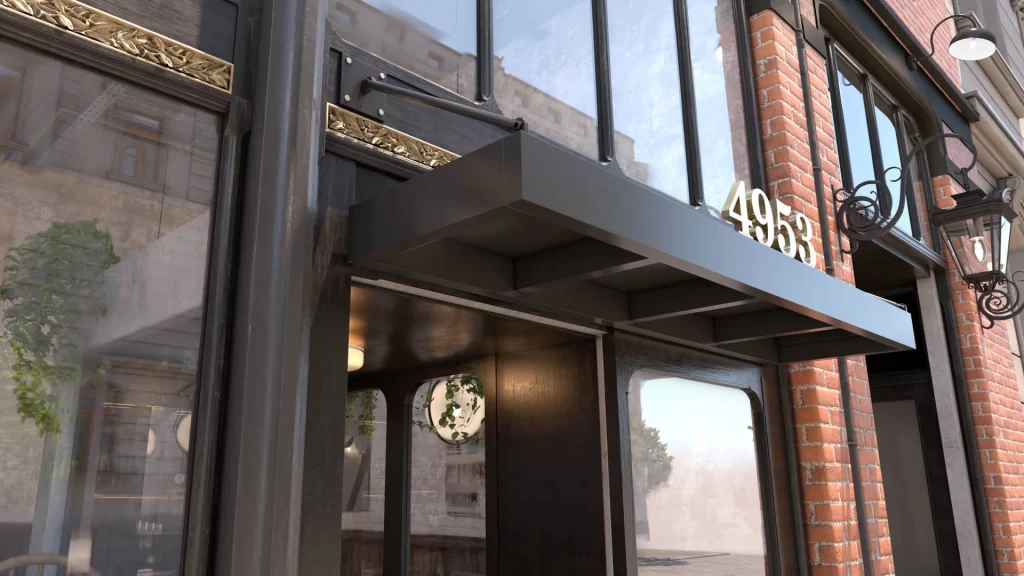Why Commercial Canopies Matter
“Architecture is the thoughtful making of space.” – Louis Kahn
Considered how a simple canopy can dramatically transform both the facade and functionality of a building. Commercial canopies are more than mere overhangs; they’re strategic assets that enhance aesthetics, improve energy efficiency, and provide essential weather protection. Let’s take a few minutes and look into how you can leverage commercial canopies to add significant value to a property!
Commercial canopies serve multiple purposes, shielding patrons from harsh weather, reducing energy costs, and making a powerful architectural statement. For architects looking to add that extra flair, business owners aiming to attract more customers, or facility managers focused on functionality, canopies offer versatile solutions that can be tailored to meet a projects specific needs.
Types of Commercial Canopies
Understanding the different types of canopies is crucial for making informed decisions.
Entrance canopies installed over main entrances provide shelter and enhance curb appeal. Consider using materials that reflect your brand’s identity—like sleek metal for a modern look or a wood grain powder coat for a rustic feel.
Walkway canopies offer protected paths between buildings or across open spaces. Ensuring the canopy design complements the surrounding architecture can create a seamless transition between spaces.
Awnings can be mounted over windows and door to provide shade and reduce indoor temperatures, controlling sunlight and shade as needed.
Cantilevered canopies, only supported from one side, offer an unobstructed space underneath. They’re ideal for areas where maximum clearance is needed without support columns obstructing the way.
Lastly, custom architectural canopies can be tailored to meet specific design and functional requirements. This allows architects to collaborate with owners to create a canopy that not only meets practical needs but can also become a landmark feature.
Materials Matter: Choosing the Right One
Selecting appropriate materials is vital for both durability and aesthetics.
Aluminum is lightweight and corrosion-resistant, making it great for modern designs and suitable for coastal areas where corrosion is a concern. Steel is extremely strong and durable, ideal for large structures requiring robust support.
Perforated aluminum screens add an artistic flair while allowing dappled sunlight below.
Glass allows natural light while providing protection from rain and snow, perfect for creating a sleek, contemporary look. Using tempered or laminated glass also enhances safety and durability.
Fabric is versatile and cost-effective, ideal for awnings and areas where you might want to change the look periodically. Choosing UV-resistant fabrics prevents fading and extends the canopy’s life.
Key Considerations Before Installation
Before installing a canopy, several factors need careful consideration. First, define what you aim to achieve with the canopy. Listing your primary goals—whether it’s weather protection, aesthetic enhancement, or branding—will guide your design choices. Ensure the canopy complements the existing architecture by working with a designer to integrate it seamlessly with your building’s style.
Checking what permits or codes you need to comply with is essential. Investigating local zoning laws and building codes early can help avoid costly delays. Also, ensure the canopy is designed to withstand local weather conditions by selecting materials and designs suitable for your area’s climate, such as accounting for snow loads in colder regions.
Determine your budget for the project by balancing upfront costs with long-term maintenance expenses to find the most cost-effective solution. Consider how easy it will be to install and maintain the canopy. Canopies that arrive assembled save time and reduce errors during installation. Choosing designs that offer ease of installation and require minimal upkeep can save time and money in the long run.
Maximize the Benefits
Commercial canopies can significantly enhance energy efficiency by shading windows and doors, reducing cooling costs during hot months. Incorporating your company’s logo or brand colors into the canopy design increases brand recognition and business visibility. Creating comfortable outdoor spaces under canopies for seating or displays can enhance customer satisfaction, making your business more inviting. Adding your location address or company name makes your business easier to find.
Real-World Success Stories
Consider the example of a downtown café that installed a custom awnings. Not only did it provide patrons with a shaded outdoor seating area, but it also became a local landmark thanks to its unique design featuring the café’s logo. The result was a 20% increase in foot traffic and a significant boost in sales! Stories like this illustrate how a well-designed canopy can make a tangible difference.

Now Bring Your Canopy Vision to Life
Convinced that a commercial canopy is a worthy investment? Here’s what to do next. Start by consulting professionals—reach out to architects and canopy manufacturers like Structureworks to discuss your ideas and get expert advice. Have a professional evaluate your building to determine the best type and design of canopy for your needs.
Use 3D modeling tools during the design and planning phase to visualize how the canopy will look before making final decisions. Submit all necessary documents to local authorities well in advance to secure required permits, avoiding any legal hiccups. Lastly, schedule installation during off-peak hours or seasons to minimize business disruptions and ensure a smooth transition.
Commercial canopies are more than just functional structures; they’re an extension of your brand and an enhancement to your building’s architecture. By carefully considering design, materials, and purpose, you can create a canopy that not only meets practical needs but also elevates the overall appeal of your property.
Ready to take the next step? Let’s transform that entrance, walkway, or outdoor space into something remarkable!
Feel free to reach out if you have any questions or need further guidance on selecting the perfect commercial canopy. We’re here to help you make the most informed decision possible!
